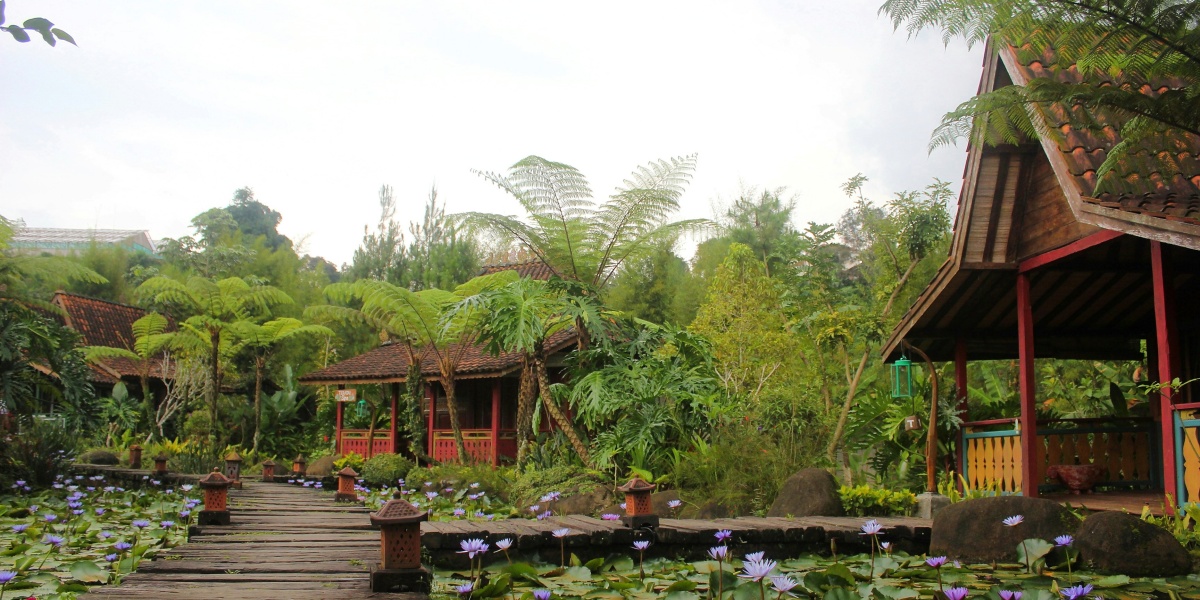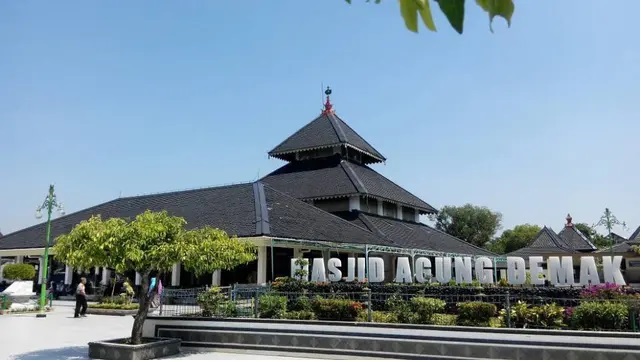Failed MFA Activation BKN? Identify the Causes and Tips to Overcome It
Digital ASN MFA BKN must be active before April 14, 2025! Check out the causes of activation failure and complete solutions here.

Kapanlagi.com - Central Java, a province rich in cultural heritage, holds invaluable beauty in the form of traditional houses. Each house is not only a shelter but also a reflection of the deep values of its society. The philosophy contained in each traditional house design is closely related to social status, spirituality, and a harmonious relationship with nature.
Traditional houses in Central Java are like windows that reveal a cultural identity that has been preserved from generation to generation. From the grand houses once enjoyed only by the nobility to simple places of worship, each type of traditional house offers a unique story about the history and philosophy of Javanese life.
In this article, we will explore the five most famous types of traditional houses in Central Java. From the majestic Joglo to the simpler Kampung, each of these house models has distinctive characteristics worth getting to know more deeply. Get ready to be enchanted by the beauty and meaning hidden behind every wall of the traditional houses of Central Java!
The Joglo traditional house is one of the most famous types of houses in Central Java. With its roof resembling two mountains, this house has become a symbol of the grandeur and glory of the nobility or priyayi in the past. The philosophy behind the design of this house is very profound, reflecting the balance between humans and nature.
The Joglo house has four main pillars called soko guru, which serve as the main supports of the building. These pillars are not only physical supports but also have spiritual significance as guardians of the world's balance.
Inside the Joglo house, there are several important parts such as the Pendopo (an open space for gatherings), Pringgitan (a space for traditional events), and Senthong which is divided into several rooms, including Senthong Tengah and Senthong Kiwa that serve different functions. Each space in the Joglo house has a specific purpose and meaning that is highly respected by the Javanese community.

Model of Limasan Traditional House from Central Java (visitjawatengah.jatengprov.go.id)
The Limasan traditional house, with its distinctive pyramid-shaped roof, is not just a building, but also a symbol of the philosophy of simplicity in life that is highly valued by the Javanese community. Made of sturdy bricks, this house is often found in rural areas, showcasing unique support pillars that vary according to the size of the building. More than that, the Limasan house reflects the spirit of mutual cooperation, as its construction involves many hands working together. Its pyramid roof symbolizes the harmonious relationship between humans and the sky and earth, while also providing protection from rain and heat, making it a work of art rich in meaning.

Central Java Traditional House Tajug Model (pariwisata.demakkab.go.id)
Unlike other traditional houses, the Tajug house has a unique role as a place of worship, not just a residence. With its tall triangular roof, this house symbolizes the eternity and oneness of God in the beliefs of the Javanese community. One of the most famous examples is the Great Mosque of Demak, which features a distinctive and grand Tajug design. Established in locations rich in historical and spiritual value, the triangular roof also symbolizes the journey towards God and spiritual achievement. Not only serving as a place for prayer, the Tajug house also becomes a center for other sacred activities, such as religious gatherings and traditional rituals, emphasizing how vital this house is in the social and spiritual life of the Javanese community.
The Panggang Pe traditional house features a simple yet captivating design, distinct from other traditional houses. Generally, this building serves as a stall or place for selling, with pillars varying between four to six, creating a unique impression. The uniqueness of this house lies in its practical function and ease of construction. Although it appears without excessive decoration, the Panggang Pe house still radiates beauty through its orderly and symmetrical form. The philosophy contained within reflects a simple yet sufficient life, depicting a modest society that prioritizes practicality in every aspect of daily life.
The Village traditional house, which serves as a residence for the lower middle class such as farmers, livestock keepers, and traders, holds its own charm. With a simple yet appealing design, this house is characterized by pillars in multiples of four and a sturdy rectangular shape, equipped with two layers of supporting pillars. The terrace at the front and back of the house adds to the spacious impression while also symbolizing the importance of social interaction within the community, where this open space becomes a venue for neighbors to exchange stories. Additionally, the Village traditional house reflects strong values of mutual cooperation and togetherness, creating close bonds in the lives of the Javanese community that are simple yet rich in meaning.
The Joglo traditional house has four main pillars called soko guru and a roof shaped like two mountains symbolizing the balance between humans and nature.
The pyramid-shaped roof of the Limasan traditional house symbolizes the relationship between humans and the sky and earth, as well as providing protection against the weather.
The Tajug house has a deep spiritual meaning, with a triangular roof symbolizing the oneness of God and is used for religious activities.
The Panggang Pe traditional house is usually used as a stall or place for selling with a simple and functional design.
(kpl/mni)
Cobain For You Page (FYP) Yang kamu suka ada di sini,
lihat isinya
Digital ASN MFA BKN must be active before April 14, 2025! Check out the causes of activation failure and complete solutions here.
Lee Do Hyun and Go Min Si will reunite in the sequel drama HOTEL DEL LUNA, "GRAND GALAXY".
This ranking is compiled based on an analysis of media coverage, interactions, and community participation regarding 50 drama actors that aired in January-February 2025.
Saudi Arabia advanced to the semifinals of the U-17 Asian Cup 2025 after eliminating Japan in a tense match that ended in a dramatic penalty shootout.
The Joint Recruitment of BUMN 2025 announces the results of the administrative selection today! Check at rekrutmenbersama2025.fhcibumn.id and seize the golden opportunity at 107 BUMN companies.
Bae Suzy and Kim Seon Ho are reunited in the drama DELUSION with a budget of Rp5.4 trillion.
Today is the deadline to activate MFA for BKN Digital ASN! Don't miss this opportunity! Follow the easy steps provided and find quick solutions if you encounter issues with the OTP code. Ensure your data security is maintained!
Photos of Kang Ha-Neul and Go Min-Si during the script reading of TASTEFULLY YOURS, airing May 2025 on ENA, spark curiosity.
Often mistaken for twins, here is a list of Hollywood artists who have similar faces.
Kim Ji Yeon learns directly from a shaman for an authentic role in the drama THE HAUNTED PALACE, airing in April 2025.
The historical horror drama THE HAUNTED PALACE premieres on April 18, 2025, starring Yook Sungjae and Bona from WJSN.
Learn how to distinguish between real and fake money using the practical and effective 3D method (See, Touch, Hold Up to Light). Also, get smart tips to protect yourself from counterfeit money scams, so you can transact safely and confidently!